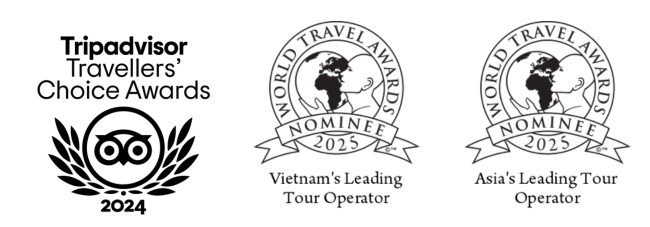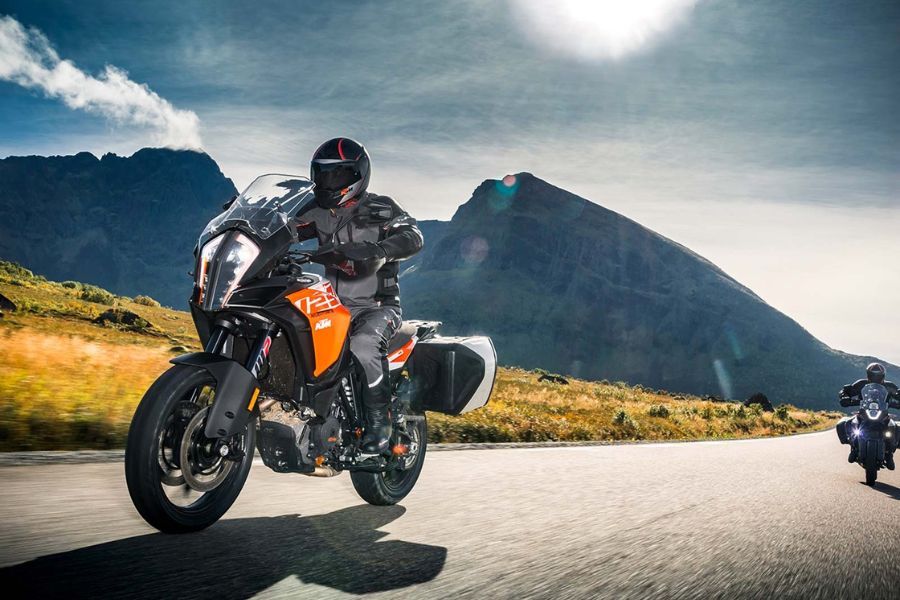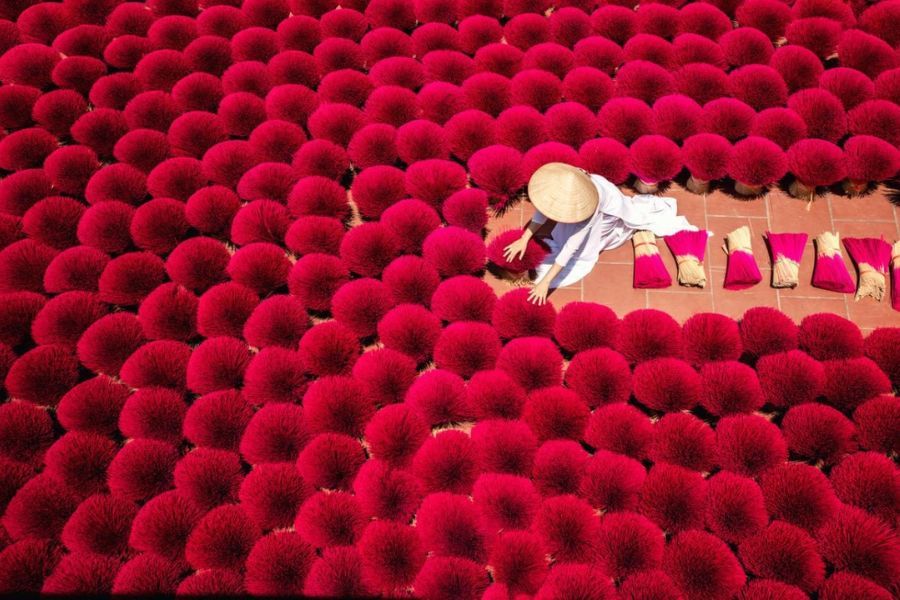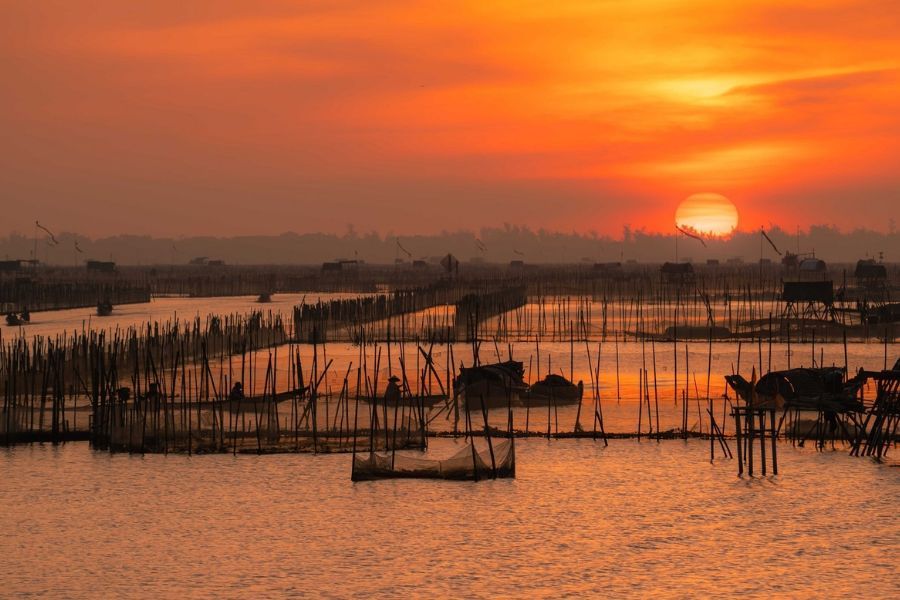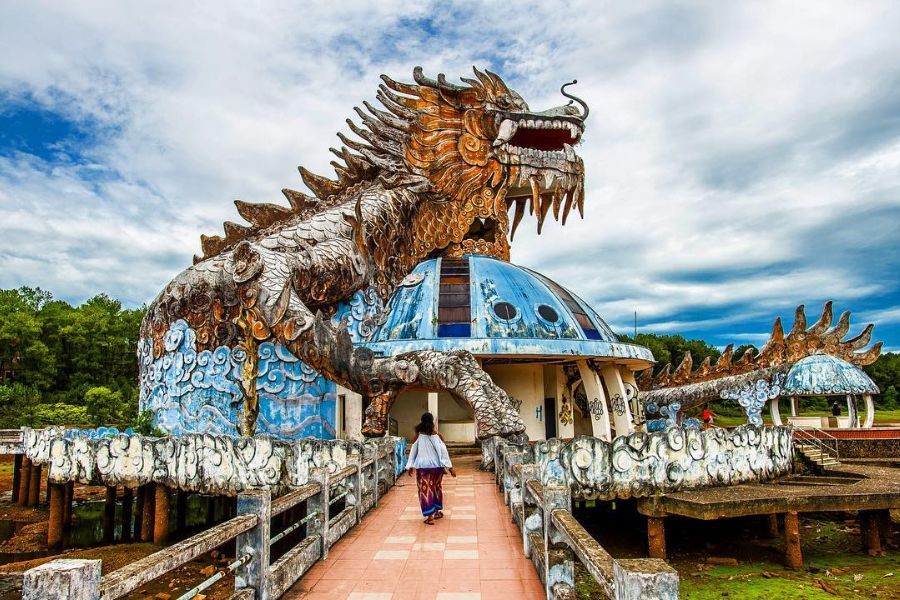A Local Journey Along Hue’s Perfume River From Morning To Sunset
Flowing through the poetic heart of Hue, the Perfume River captures the city’s soul with its gentle beauty and cultural depth. Its tranquil charm invites travelers to slow down, breathe in history, and feel Vietnam’s imperial legacy come alive.
Table of Contents
ToggleIntroduction To Perfume River
The Perfume River is one of the most iconic natural landmarks in central Vietnam, flowing through the heart of Hue city. Its calm waters and scenic surroundings have long been a source of inspiration for poets, artists, and musicians. The river stretches about 80 kilometers, winding past ancient pagodas, royal tombs, and forested hills before emptying into the Tam Giang Lagoon. For generations, it has been a central part of daily life and royal rituals in Hue, linking the city’s past with its present.
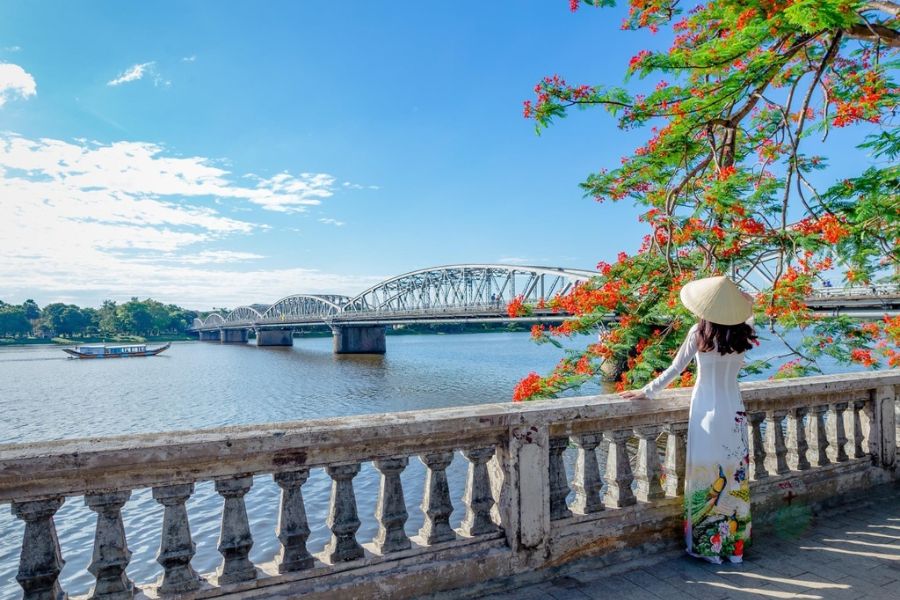
Perfume River serves as a major tourist attraction to travelers not only because of the serene nature, but also because one travels to get a fresh angle on Hue. On the river, one can take a boat ride which reveals old villages, imperial remains, and beautiful countryside. Among the many things to do in Hue, a peaceful boat ride along the Perfume River appeals to those who enjoy quiet landscapes and cultural heritage.
History Of Perfume River
The Perfume River, known locally as Song Huong, has long been tied to Hue’s cultural and historical identity. Its name came from the scented flowers that used to fall into the water from upstream forests. The river flows through historic areas such as Kim Long and Ngoc Ho, where mandarins and royal families once lived. During the Nguyen Dynasty, it was used regularly for transport and ceremonial events like royal boat processions and ancestor worship.
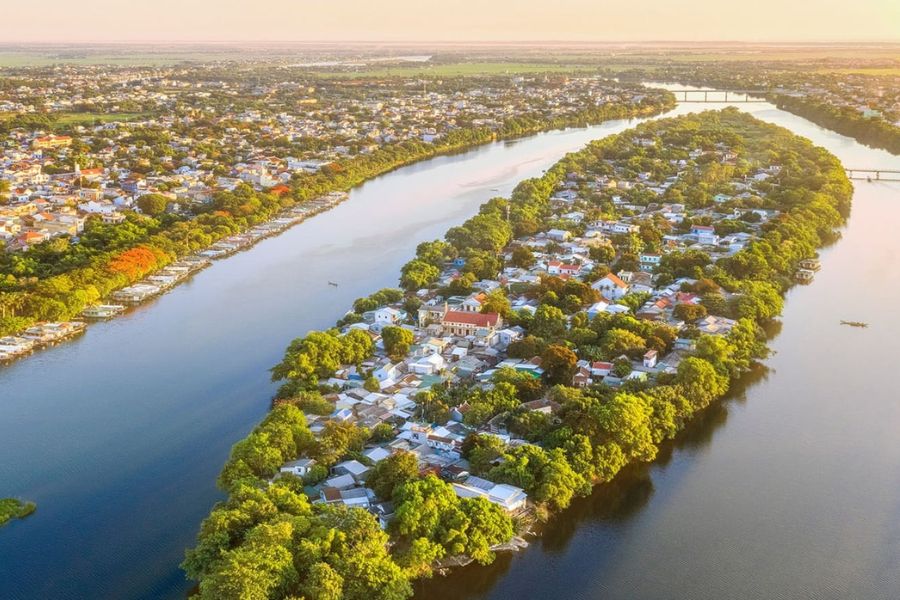
This was strategically placed when Hue was being planned as the imperial capital by the Nguyen emperors in the early 19th century. The smooth flow of the river through the city was, according to the feng shui beliefs, the reason that led to harmony and balance. Some of its major constructions were royal tombs, Thien Mu Pagodas, and the Imperial Citadel, among many others. This river effectively connected these locations and, therefore, it became a central point of the spiritual and geographical Hue configuration.
Top 5 Iconic Attractions In Perfume River
The Perfume River passes through many of Hue’s most important cultural sites. Most boat tours include stops at these key locations, giving visitors a chance to explore the city’s heritage from the water.
Thien Mu Pagoda
Located on Ha Khe Hill, Thien Mu Pagoda overlooks the northern bank of the Perfume River. Built in 1601, it is one of the oldest and most visited pagodas in Vietnam. The site is best known for its seven-story Phuoc Duyen Tower, which has become a symbol of Hue. The pagoda also houses old Buddha statues, ceremonial bells, and the car once used by monk Thich Quang Duc before his self-immolation in 1963. Most river cruises stop here as part of the itinerary.
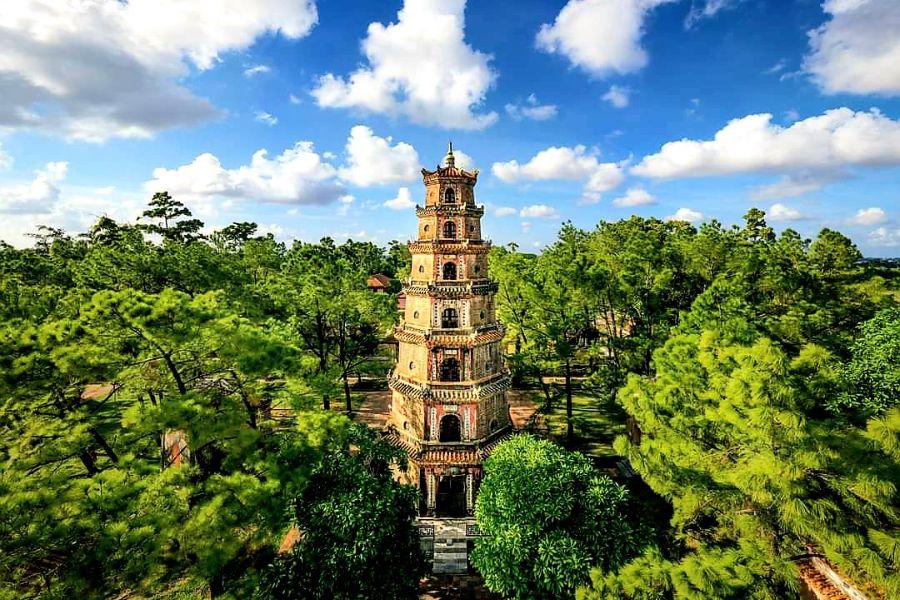
Tomb Of Emperor Minh Mang
Minh Mang’s tomb is located about 12 kilometers upstream from the city center. It is one of the most impressive examples of Nguyen Dynasty architecture, with a layout that strictly follows feng shui principles. The complex includes courtyards, pavilions, lotus lakes, and stone statues, all arranged symmetrically. The peaceful setting and traditional design make it a favorite stop for both local and foreign visitors.
Hon Chen Temple
Hon Chen Temple sits on a hill above the riverbank in Ngoc Ho village. It is dedicated to the goddess Po Nagar and other spirits associated with nature and fertility. Unlike most imperial sites, the temple blends Cham and Vietnamese architectural elements. It is also the site of the annual Hon Chen Festival, which involves a colorful river procession with dragon boats, traditional music, and ritual offerings.
Dong Ba Market
While not a historic monument, Dong Ba Market is an essential stop along the Perfume River for those who want to see daily life in Hue. The market sells fresh produce, traditional snacks, conical hats, and handmade crafts. It is busiest in the morning, and visitors often combine a short market visit with a walk along the riverbank nearby.
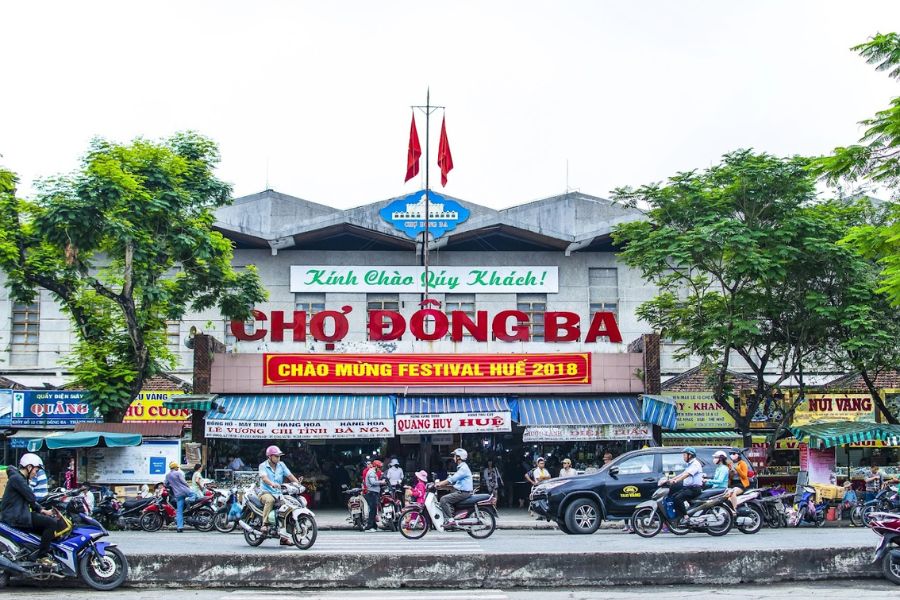
Truong Tien Bridge
Truong Tien Bridge, built during the French colonial era, connects the two banks of Hue’s city center. It was designed by Eiffel’s company and is now a popular photography spot, especially when lit up at night. The bridge plays a symbolic role in Hue’s modern identity, and it’s also near many restaurants and cafes with river views.
4 Cultural Experiences You Shouldn’t Miss
The Perfume River is more than just a scenic waterway. It plays an active role in local traditions, religious life, and daily routines. If you want to understand Hue beyond the monuments, here are three cultural experiences that offer a closer look at how the river connects people and heritage.
Morning Market Visits By Riverside
Early mornings along the Perfume River are busy with market activity. Locals set up stalls near Dong Ba Market and nearby piers to sell fresh vegetables, flowers, and seafood brought in by boat. Visitors often stop by for a quick breakfast or just to watch the morning flow of goods and people. Popular picks include bun bo Hue and sticky rice sold right near the pier.
Dragon Boat Rides With Traditional Music
One of the most popular experiences on the Perfume River is taking a ride on a dragon boat. These wooden boats are decorated with traditional motifs and shaped like dragons. Several operators offer short cruises, some of which include live performances of Hue royal court music, a UNESCO-recognized cultural heritage of Vietnam. Most tours start near Truong Tien Bridge and head towards Thien Mu Pagoda or Hon Chen Temple.
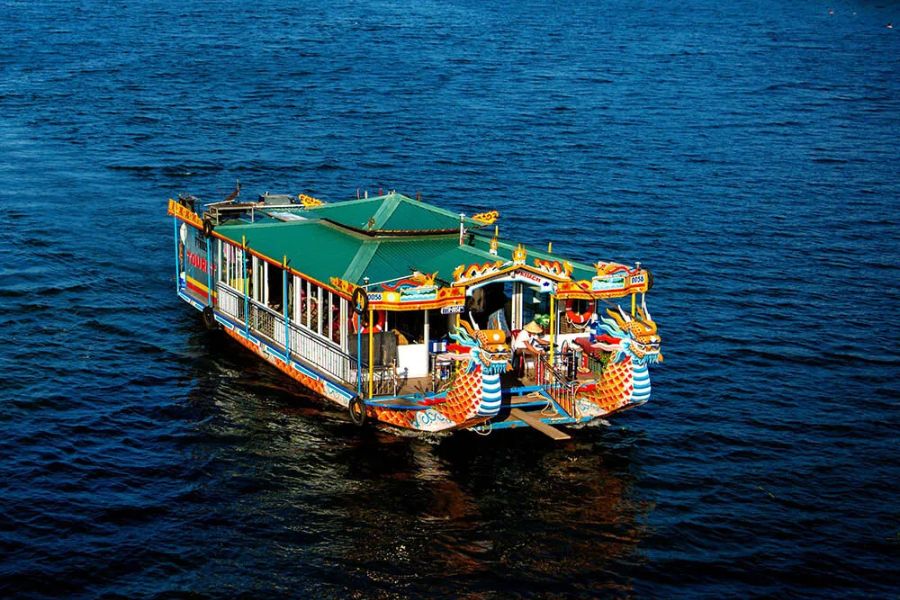
Join The Hon Chen Temple Festival
Held twice a year, the Hon Chen Festival is a vibrant religious event on the river. Locals dress in traditional costumes and perform ritual offerings to the Mother Goddess and river spirits. The highlight is a boat procession with decorated vessels carrying incense, flowers, and music across the water. Visitors can watch from the riverbanks or join a tour that follows the boats. It’s one of the rare chances to witness living folk traditions in action.
Try A Sunset Dinner Cruise
A few tour operators in Hue provide dinner cruises up the Perfume River during the dry months, March-September. These cruises tend to begin in the late afternoon and last two hours. There are also boats that have live folk or court music performances on them. The cruises will start off at the piers along Le Loi Street or Truong Tien Bridge. Most range between 250,000 and 500,000 VND per person, but operators and men typically make the difference.
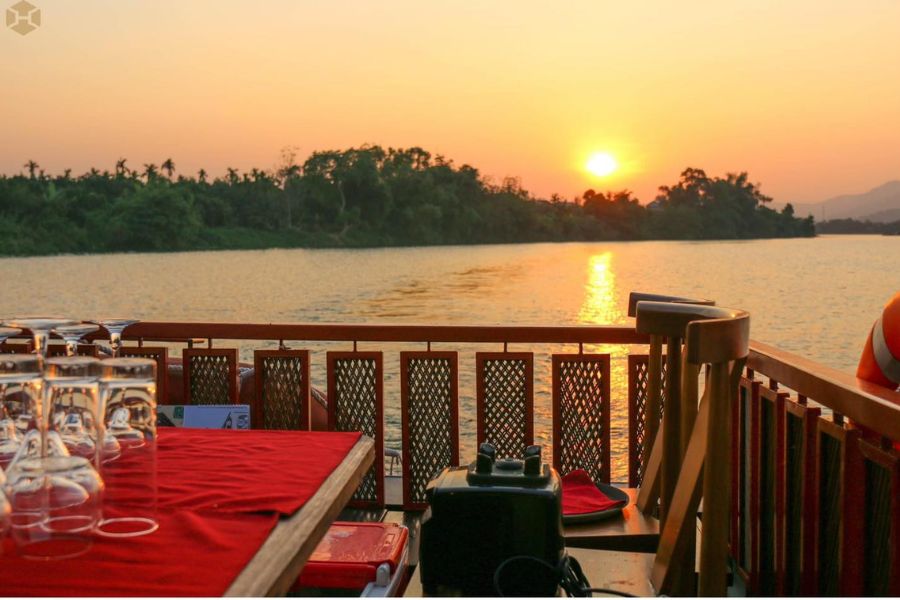
Entrance Fee
It does not cost any fee to enter the Perfume River since it flows freely through the city. The only thing is that travelers ought to know in advance the general rates of river-related activities, i.e., boat rides and access to local and immediate heritage sites. There are cases when some boat owners can provide package offers with several stops on the river. The prices change according to seasons, times of the day, and the nature of a visit (private or shared tour).
| Experience | Price Range | Notes |
| Dragon boat ride (1–1.5 hrs) | 150,000 – 250,000 VND per boat | Price per boat (4 – 6 people). Departure near Truong Tien Bridge. |
| Dinner cruise with a set menu | 250,000 – 500,000 VND per person | Includes a meal and a music performance. Book in advance during high season. |
| Thien Mu Pagoda | Free | Donations optional. Modest clothing required. |
| Hon Chen Temple | 30,000 – 50,000 VND per person | May vary during festival days. |
| Minh Mang Tomb | 150,000 VND per adult | Group tickets are available if visiting multiple royal tombs. |
Opening Hours
The Perfume River is accessible all year round. However, most activities around it, like boat tours, temple visits, and riverside markets, follow regular timeframes. Below is a quick guide to typical operating hours:
| Activity | Opening Hours | Notes |
| Dragon boat ride | 07:30 AM – 05:00 PM | Tours start from piers near Truong Tien Bridge. |
| Dinner cruise | 04:30 PM – 08:00 PM | Requires advance booking during peak season. |
| Thien Mu Pagoda | 07:00 AM – 05:30 PM | Open daily. No entrance fee. |
| Dong Ba Market | 05:00 AM – 06:00 PM | Busiest before 10:00 AM. Best for early visits. |
| Hon Chen Temple | 07:00 AM – 05:00 PM | May extend hours during festival seasons. |
The best time to visit Hue, especially for enjoying the Perfume River, is from March to August when the weather is dry and river conditions are stable. April and June are good choices if you want to catch cultural events or boat festivals. From September to January, rainfall is frequent, and flooding can occur, especially in October and November. If you’re planning to attend the Hon Chen Festival, check dates based on the 3rd and 7th lunar months. This is when the main processions and ceremonies take place on the river.
How To Get To Perfume River
The Perfume River runs through the central area of Hue, and most travelers can reach it within minutes from their hotel. A common starting point is Hue Railway Station or the nearby Citadel area, where many accommodations are located. From there, it’s easy to access key river spots like Truong Tien Bridge, Le Loi Street, or Toa Kham Wharf, where boat tours typically begin.
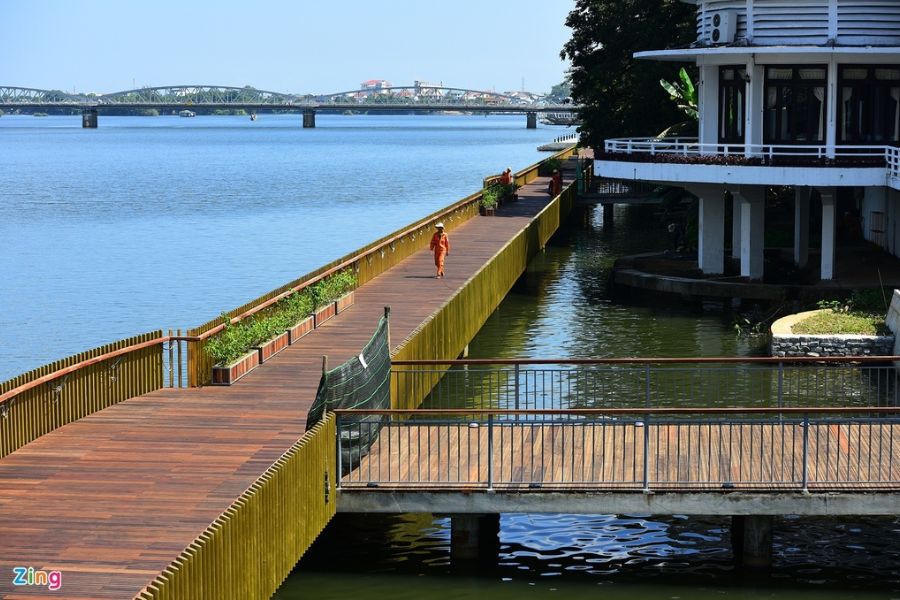
Here’s a quick guide to getting to the river depending on your transport method:
| Transport | Duration | Estimated Cost | Notes |
| Walking | 10 – 20 mins | Free | Ideal if staying near the Citadel or Le Loi Street. Many hotels are within walking distance. |
| Taxi / Grab | 5 – 10 mins | 30,000 – 60,000 VND | Available 24/7. Grab is widely used in Hue. |
| Cyclo | 20 – 30 mins | 40,000 – 70,000 VND | Slower but scenic. Negotiate the price beforehand. |
| Bicycle rental | Flexible | 40,000 – 60,000 VND/day | Available at hotels and rental shops. Good for exploring river paths. |
| Motorbike rental | Flexible | 120,000 – 180,000 VND/day | Requires a Vietnamese or international license. Useful for visiting sites along the river. |
Things To Know Before Traveling To Perfume River
While visiting the Perfume River is simple and accessible, a few practical tips can help make your experience smoother and more enjoyable. These small details often make a big difference, especially if it’s your first time in Hue.
- Boat tours don’t always follow a fixed schedule. If you’re not on a group tour, it’s common for boat owners to wait until they have enough passengers before departing, even if that means a delay of 20-30 minutes.
- Not every sunset cruise turns out the way you imagine, especially on overcast days. It’s worth checking the weather before booking if you care about the view.
- During the Hon Chen Festival, expect crowds along the riverbanks and very little shade. It gets hot fast, so having water and a hat on hand is a smart move.
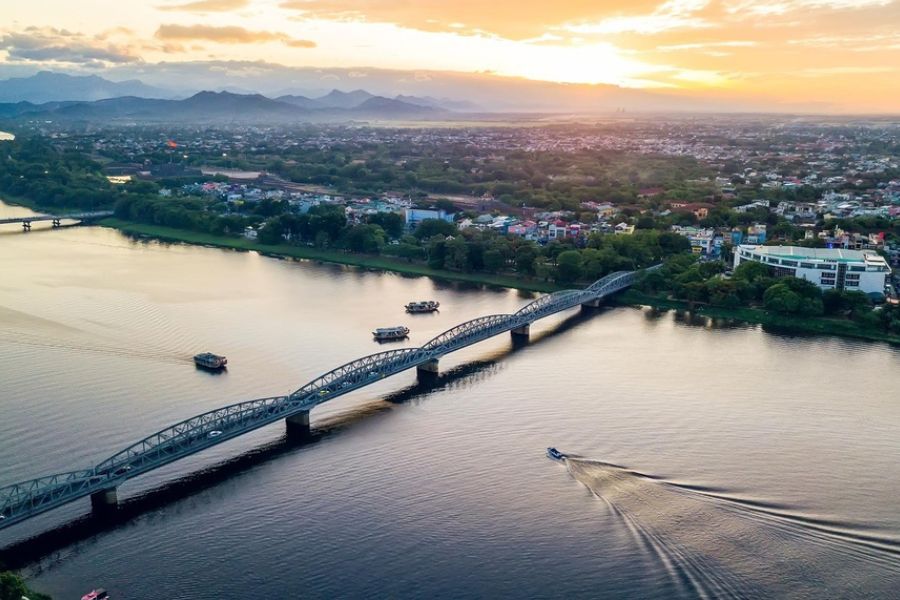
- The dragon boats used for sightseeing may not have life jackets for every passenger unless you specifically ask. If you’re traveling with children or non-swimmers, it’s worth checking before boarding.
- Some boats offer on-board music performances, but not all do. If music is part of your plan, confirm this in advance, as many cheaper rides are transport-only.
- Riverbank paths in Hue are popular for walking, but parts of the route between Truong Tien Bridge and Dong Ba Market can be uneven or poorly lit at night. A flashlight or phone light is useful.
- There’s limited signage in English along the river, especially at smaller piers or stops. If you want a self-guided experience, consider downloading offline maps or saving key locations ahead of time.
Final Thoughts: Is Perfume River Imperial City Worth Visiting?
The Perfume River is not a standalone destination, but it plays an important role in how travelers experience Hue. It connects major cultural landmarks, offers a relaxed way to explore the city, and adds a quieter layer to the trip. If you’re planning to visit Hue, it’s worth setting aside time to explore the river by boat or on foot. For travelers who want help organizing a route or booking a cruise, Seni World can support with planning and local arrangements.

